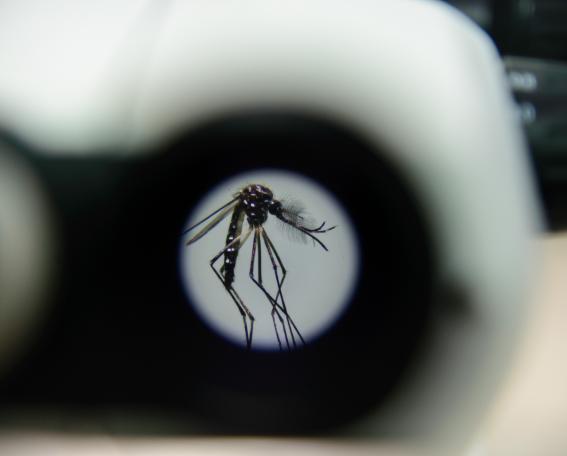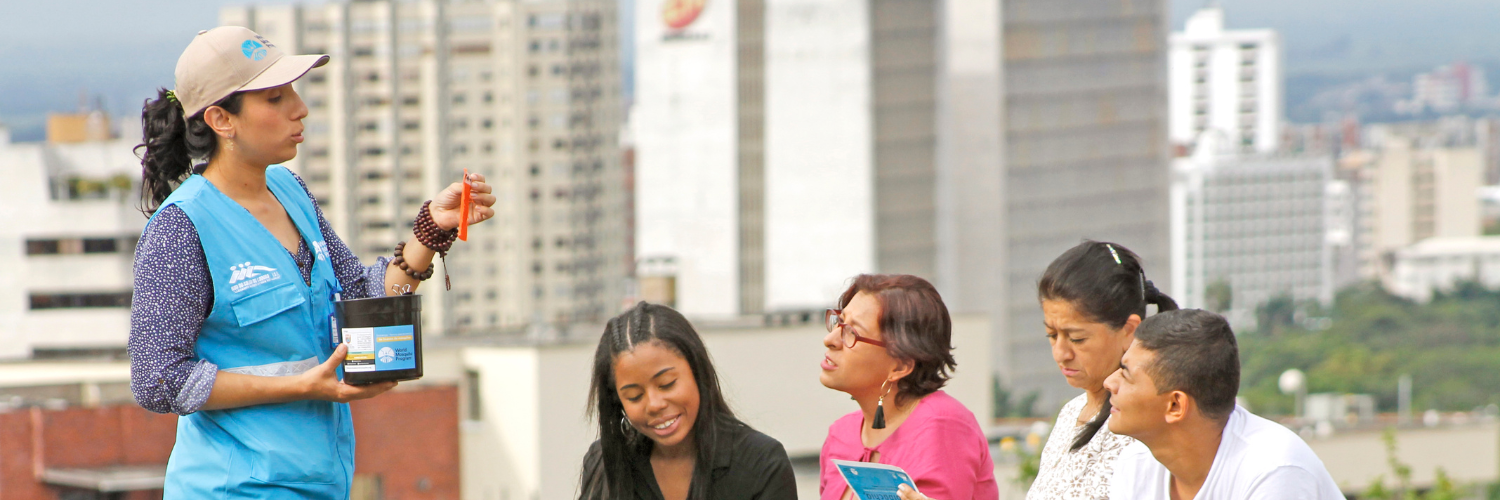There are a number of ways mosquito-borne diseases can be controlled. Find out more about how the World Mosquito Program's Wolbachia method compares to other mosquito control methods being used around the world.
Jump to the comparison table further below to compare our method side-by-side with other methods.

Insecticide spraying
This method involves spraying chemical toxins that kill mosquitoes and other insects. If sufficient numbers of mosquitoes can be killed then transmission of disease to humans can be reduced. Insecticides can be applied both indoors and outdoors. Some methods, like outdoor fogging can have limited impact on Aedes aegypti mosquitoes.
Sterile Insect Technique (SIT)
The Sterile Insect Technique (SIT) uses irradiation to sterilize male mosquitoes which are then released in large numbers to mate with wild females, thus preventing wild female eggs from hatching. Over time and successive releases the wild population is predicted to decline.
Incompatible Insect Technique (IIT)
This approach uses Wolbachia but in a different way from how we use it. In this approach, mosquitoes are reared in laboratories that contain Wolbachia. They are sexed and then only males are released. When a Wolbachia infected male mosquito mates with a wild female mosquito without Wolbachia her eggs do not hatch. This has a similar effect as SIT and over time and with repeated releases the wild population should decline.
Combined Sterile Insect Technique & Incompatible Insect Technique
IIT requires completely accurate sexing to be effective, otherwise the target population will not decline. Completely accurate sexing can be hard to achieve and so it is possible to combine IIT with low doses of irradiation to sterilize any fertile females that are accidentally released in an IIT program.
Genetic modification
There are a number of different genetic modification (GMO) methods that have been developed. All of them share the same characteristic of introducing lethal genes into the target mosquito population. These methods are predicted to reduce the size of the mosquito population over time.
| Sustainability | Number of mosquitoes released | Effectiveness | Length of mosquito-release period | Scaleability | Affordability | Evidence of public health impact | Safety | GMO status | Where it's used | |
|---|---|---|---|---|---|---|---|---|---|---|
| World Mosquito Program Wolbachia Method | Self-sustaining | Only need to release a small number of mosquitoes | Usually only need to release mosquitoes once | Short mosquito-release period (once per week for 12–30 weeks) | Has been demonstrated at the scale of hundreds of kms² | Affordable. In most urban areas predicted to be cost saving | Multi-country evidence indicating major reductions in dengue incidence | Safe for human health | Non-GMO | Currently in 14 countries |
| Insecticide spraying | Not self-sustaining | N/A | Need to constantly reapply insecticides. Mosquitoes develop resistance to insecticides. Not cost-effective to use as a prevention tool | N/A | Can be used at the scale of towns and cities | Expensive because of need for continuous application | No randomised control trials showing evidence of impact | Insecticides can harm human health | Non-GMO | Used in most countries with mosquito-borne diseases |
| Sterile Insect Technique (SIT) | Not self-sustaining | Need to release a very large number of male mosquitoes | Need to continually release large amounts of mosquitoes | Mosquito-release period is indefinite otherwise population will rebound | No published evidence of scaleability | Relatively more expensive because of need for continuous application | No evidence on whether it reduces disease transmission | Safe for human health | Non-GMO | Currently piloted in five countries |
| Incompatible Insect Technique (IIT) | Not self-sustaining | Need to release a very large number of male mosquitoes | Need to continually release large amounts of mosquitoes | Mosquito-release period is indefinite otherwise population will rebound | Demonstrated to work in areas up to several square kilometres | Relatively more expensive because of need for continuous application | No evidence on whether it reduces disease transmission | Safe for human health | Non-GMO | Successfully trialled in French Polynesia |
| Combined SIT & IIT | Not self-sustaining | Need to release a very large number of male mosquitoes | Need to continually release large amounts of mosquitoes | Mosquito-release period is indefinite otherwise population will rebound | Demonstrated to work in areas up to several square kilometres | Relatively more expensive because of need for continuous application | No evidence on whether it reduces disease transmission | Safe for human health | Non-GMO | Currently being trialled in China and Thailand |
| Genetic modification | Not self-sustaining | Numbers of mosquitoes released depends on the specific method | Numbers of mosquitoes released depends on the specific method | In some cases, mosquito-release period is indefinite otherwise population will rebound | Demonstrated to work in areas up to several square kilometres | Often more expensive because of need for continuous application | No evidence on whether it reduces disease transmission | Safe for human health | GMO | Currently being used in Brazil |

Summary
World Mosquito Program Wolbachia Method
Our Wolbachia method is a safe, self-sustaining and cost-effective method of preventing mosquito-borne diseases.
Insecticide spraying
This method is costly and decades of experience demonstrates it cannot eliminate mosquito-borne diseases.
Sterile Insect Technique (SIT)
This method relies on the continuous production and release of male mosquitoes and is, therefore, more expensive than the World Mosquito Program's method. There is no field evidence that it can reduce the risk of mosquito-borne diseases.
Incompatible Insect Technique (IIT)
This method relies on the continuous production and release of male mosquitoes and is, therefore, more expensive than the World Mosquito Program's method. There is no field evidence that it can reduce the risk of mosquito-borne diseases.
Combined Sterile Insect Technique & Incompatible Insect Technique
This method relies on the continuous production and release of male mosquitoes and is therefore more expensive than the World Mosquito Program's method. There is no field evidence that it can reduce the risk of mosquito-borne diseases.
Genetic modification
This method is not self-sustaining and is very expensive, so it's not often accessible for many communities. Also, as no impact assessment has been done, it hasn’t been proven to be safe for humans.


